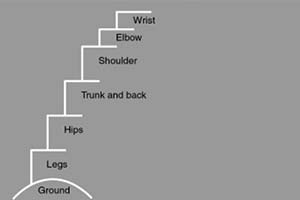Tennis Injuries
Tennis is an exciting sport that is played by athletes of all levels and ages. It is estimated that tens of millions of people play tennis in the United States. More than half a million are adolescents, and growing numbers of seniors continue to play tennis. Nowhere is this better demonstrated than here in South Florida where tennis courts line the parks and communities are filled with players days and nights. Academies are abundant as young junior players prepare for successful college careers and for some, professional.

At all levels, tennis can prove to be a challenging sport. Tennis is a complex sport that requires good hand-eye oordination and full body participation to run, position, swing and hit. A successful tennis player must possess the ability to exert muscular force at high speeds, obtain a strong grip in his or her hand, generate strong rotation of the shoulders and hips and sudden changes of direction and body position while running at high speeds. These combined movements can result in injury.
Maintaining strength and flexibility of the entire kinetic chain is important for success and prevention of injury. The kinetic chain principle states that actions in one part of the body are transferred through a linked system to other parts. Good use of this kinetic chain leads to less energy expenditure overall to achieve the desired result. For example, studies have shown that 50% of the energy needed to hit a forehand is generated from the legs and trunk and transferred through the kinetic chain to the racquet. Any break in the kinetic chain, such as not bending your knees during serve or not rotating the trunk, can lead to overload of adjacent parts in the chain such as the shoulder and elbow.
THE KINETIC CHAIN
Tennis injuries can be categorized in 2 categories. The majority (2/3) of injuries are a result of OVERUSE. Examples are muscle strains and tendonitis (such as tennis elbow). These are a particular problem for the adolescent group who begin playing with a lower level of physical conditioning. Injuries in the younger age groups are not usually long standing or as chronic as the older players with years of overuse.
There are multiple causes of overuse injuries in tennis. Repetitive motions and strokes can lead to overload of joints, ligaments and tendons. Inadequate rest and recovery, incorrect tennis specific conditioning, strength imbalances, inflexibility can lead to overuse injury.
Less common are TRAUMATIC injuries (1/3) which include ligament sprains, muscle pulls and fractures. Most of these injuries occur in the lower extremity. They are not easily prevented nor are they definitely related to poor technique or training errors.
According to the USTA Sports Science Committee, overuse injuries in tennis are an interaction between 1. Sport specific demands such as equipment and court surfaces, and 2. Individual factors of the player like technique, style of play, strength and fitness.
In my next blog I will discuss SHOULDER AND ELBOW overuse injuries including common problems, prevention and treatment.
